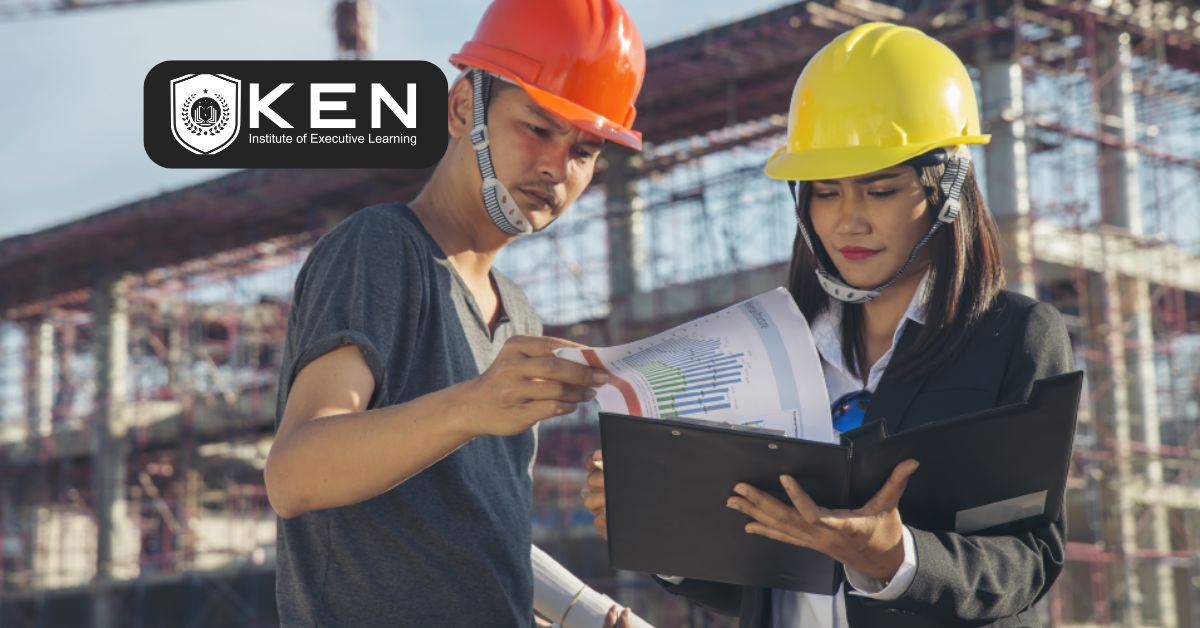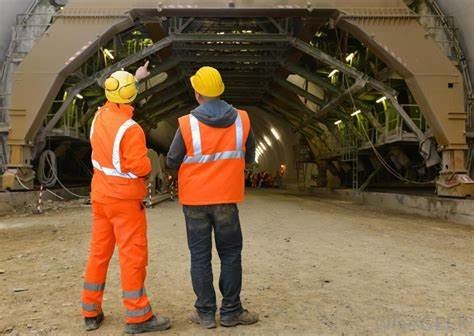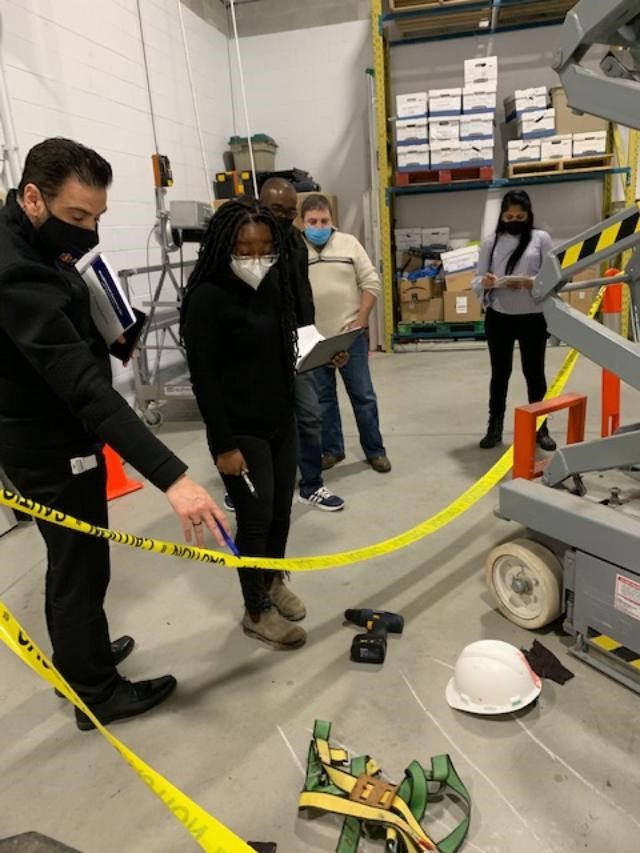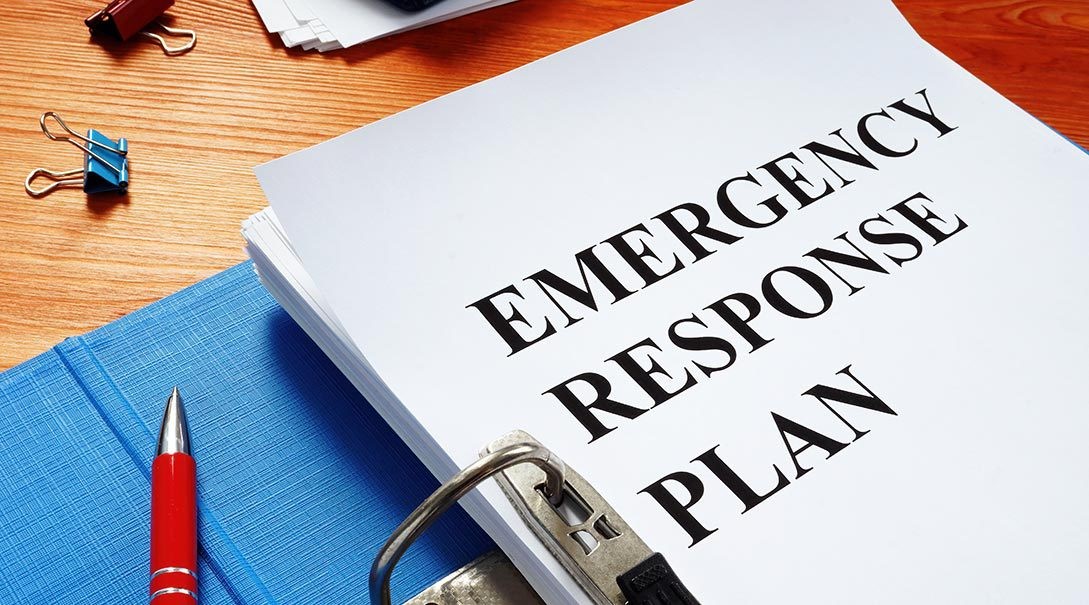
Responsibilities of Construction Safety Officers encompass a wide range of tasks aimed at identifying and mitigating potential hazards promoting safety awareness and ensuring compliance with relevant regulations and standards. Overall, construction safety officers play a crucial role in fostering a safe and healthy work environment on construction sites, protecting the well-being of workers, and reducing the risk of accidents and injuries.
The key responsibilities typically associated with construction safety officers:
Risk Assessment:
Safety officers conduct thorough risk assessments of construction sites to identify potential hazards such as falls, electrical hazards, chemical exposures, and structural weaknesses.
Conducting comprehensive risk assessments involves: identifying potential hazards, including those related to working at heights, heavy machinery operation, electrical work, hazardous materials, and environmental factors.
Using tools such as checklists, risk matrices, and safety data sheets to assess hazards and their associated risks, Safety officers analyze the likelihood and severity of identified hazards to prioritize mitigation efforts. They may use various techniques such as job hazard analysis (JHA), safety audits, and walk-around inspections to identify and evaluate risks. Involve workers and supervisors in the risk assessment process to gather first-hand knowledge and enhance buy-in for safety measures.
Safety Inspections:
The responsibility of Construction Safety Officers is to conduct regular inspections of construction sites to ensure compliance with safety regulations and to identify any unsafe conditions or practices. These inspections may include examining equipment, machinery, scaffolding, and other structures.
Safety officers inspect equipment, machinery, scaffolding, ladders, personal protective equipment (PPE), and other work areas to ensure they meet safety standards.

They document findings and communicate them to relevant stakeholders for corrective action. Pay particular attention to high-risk activities such as working at heights, excavation, and confined space entry.
They use specialized equipment such as drones or infrared cameras to inspect hard-to-reach or hazardous areas.
Safety Training:
Developing and delivering effective safety training programs is critical for ensuring that workers understand and follow safe work practices.
Safety officers develop and implement safety training programs for construction workers, covering topics such as hazard recognition, proper use of personal protective equipment (PPE), emergency procedures, and safe work practices.
They design training materials and sessions tailored to the specific hazards and requirements of the construction site. Utilize a variety of training methods, including classroom sessions, hands-on demonstrations, videos, and toolbox talks. Provide refresher training regularly and whenever new hazards or procedures are introduced.
One of the most important Responsibilities of Construction Safety Officers is to ensure that training materials are clear, engaging, and accessible to workers of varying literacy levels and language proficiency.
Accident Investigation:
In the event of an accident or near-miss incident, safety officers conduct thorough investigations to determine the root cause and implement corrective actions to prevent similar incidents in the future.
They gather evidence, interview witnesses, and analyze data to identify contributing factors. Follow established protocols and procedures for conducting accident investigations, adhering to legal and regulatory requirements. Collect and preserve physical evidence, such as equipment, materials, and environmental samples. They interview all parties involved in the incident, including witnesses, injured workers, and supervisors.

Based on their findings, safety officers develop recommendations and corrective actions to prevent similar incidents in the future.
Safety Policies and Procedures:
Safety officers develop and enforce safety policies and procedures specific to the construction site, often in collaboration with management and other stakeholders. Policies may address topics such as site access control, work permits, confined space entry, and safety signage.
They develop and enforce safety policies and procedures ensuring that all workers are aware of and adhere to them. Clear communication and training are essential to ensure that all workers understand and comply with these policies through orientation sessions, safety meetings, and signage.
Develop written safety policies and procedures that are specific, measurable, achievable, relevant, and time-bound (SMART).
Emergency Preparedness:
Developing emergency response plans and conducting drills is a prior Responsibility of Construction Safety Officers to ensure that workers know how to respond effectively to emergencies such as fires, chemical spills, or medical emergencies. Establish clear roles and responsibilities for all personnel during emergencies and ensure that communication channels are robust and reliable. Regular drills and simulations help validate the effectiveness of emergency plans and identify areas for improvement.

Safety officers coordinate with relevant authorities and stakeholders to establish evacuation procedures, emergency contacts, and medical response protocols. Coordination with external emergency responders, such as fire departments and medical services ensures a coordinated response.
Safety Documentation:
Maintaining accurate records of safety inspections, training sessions, incidents, and corrective actions is a crucial aspect of the safety officer’s responsibility. These records may be required for regulatory compliance or legal purposes. Accurate record-keeping is essential for documenting safety activities, incidents, inspections, and training sessions.
Safety officers maintain detailed records to demonstrate regulatory compliance, track trends, and identify areas for improvement. Documentation may include inspection reports, training records, incident reports, and safety meeting minutes. They use electronic systems or software applications to organize and manage safety documentation efficiently.
It is important to ensure that documentation is stored securely and is easily accessible for audits, investigations, and reporting purposes.
Regulatory Compliance:
Keeping abreast of relevant safety regulations and standards is essential for safety officers to ensure that construction activities comply with legal requirements. Staying up-to-date with relevant safety regulations, codes, and standards is crucial for ensuring compliance and avoiding penalties. Safety officers monitor regulatory changes and update safety programs and procedures accordingly.
They may also liaise with regulatory agencies and participate in inspections or audits to demonstrate compliance. They collaborate with legal counsel, regulatory experts, and industry peers to interpret and apply regulations effectively.

The Safety Officer proactively addresses compliance gaps and implements corrective actions to mitigate regulatory risks.
Communication:
Effective communication is vital for promoting a culture of safety and ensuring that everyone on the construction site is aware of safety expectations and procedures.
A major Responsibility of Construction Safety Officers is to manage Effective communication with management, supervisors, and workers which is essential for promoting a culture of safety on construction sites. They provide guidance and feedback to ensure that safety concerns are addressed promptly. Safety officers communicate safety policies, procedures, and updates to management, supervisors, and workers through meetings, training sessions, signage, and other channels.
Using a variety of communication channels, including meetings, newsletters, bulletin boards, and digital platforms safety officers foster a culture of open communication where workers feel empowered to raise safety concerns and contribute to continuous improvement efforts.
They encourage open dialogue on safety concerns, and feedback from workers on safety policies, procedures, and practices and incorporate their input into decision-making processes.
Continuous Improvement:
Continually evaluating and improving safety procedures and practices based on evolving industry standards, best practices, and lessons learned from incidents is also a responsibility of Safety officers.
They actively seek opportunities to enhance safety performance through ongoing evaluation and improvement initiatives. Continuous improvement efforts may involve updating policies, enhancing training programs, implementing new safety technologies, or redesigning work processes to minimize risks, establishing key performance indicators (KPIs) and metrics to track safety performance, and identifying trends over time.

They conduct regular reviews and assessments of safety programs and initiatives to identify strengths, weaknesses, and areas for improvement and help in setting benchmarks against industry peers and best practices to identify opportunities for innovation and enhancement.
By meticulously and effectively fulfilling these responsibilities, construction safety officers play a pivotal role in creating and maintaining a safe work environment where workers can perform their duties without undue risk of harm or injury and with confidence and peace of mind.
Seeking a flexible pathway to advance your academic studies alongside your current work commitments? Your search ends here! With learners from 63 countries already enrolled, will you be the next addition to our global community? Connect with us today and discover how you can propel your career to new heights.
Join Ken Institute’s online courses in Occupational Health and Safety, Fire Safety, Environment and Sustainability, and Mechanical Engineering.
Get in touch with us at: info@keneducation.in
Visit our website: www.keneducation.in
Call us on +917569034271
Let’s connect on Facebook, YouTube, LinkedIn, and Instagram.

